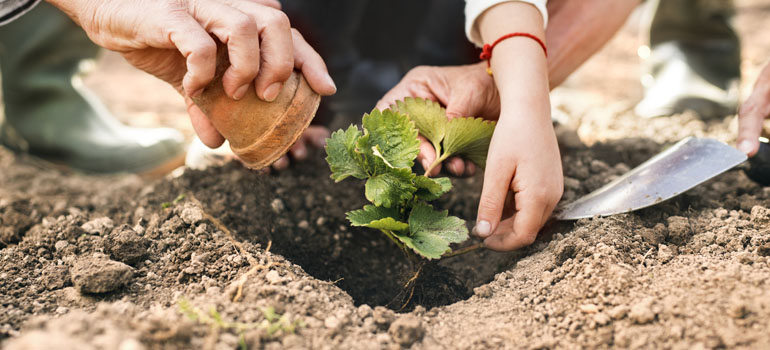Question and answer section
In the Garden: July

After the stress of a workday, puttering around in your garden on these long summer days is therapeutic. Summer is also a great time to prepare your garden for autumn, and hopefully an Indian summer.
Culinary Herbs: In a sunny area of your garden, plant cilantro, dill, rosemary, thyme, parsley, mint, and chives.
Fertilizer: Annuals, perennials, and trees will all enjoy a boost of nitrogen. Use an all-purpose fertilizer. After azaleas, camellias, and rhododendrons have finished blooming, use an acid-loving plant food on these. We recommend Espoma’s® Holly-tone®.
Tomatoes: Tomato seeds can still be started indoors on a sunny windowsill. If your outdoor tomato plants have purpling or yellowing, this probably indicates a nutritional deficiency, and only then should they be fertilized. You can use Espoma’s® Garden-tone®. Irregular watering during a heat wave (should we be so lucky) can cause rapid growth, but it is not good for the fruit.
Vegetables: Plant a second crop of vegetables now: beets, bush beans, carrots, radishes, cabbage, cauliflower, fava beans, and turnips. Harvesting your vegetables while they are young and on a regular basis will keep them productively fruiting. Harvest early in the day.
Color: Now is the time to plant summer flowering perennials, shrubs, and annuals. Marigolds, petunias, salvia, fuchsias, and begonias should all do the trick to make your
garden bright and colorful.
Hanging Baskets and Container Plants: During heat waves, these plants should be checked daily to see if they need water. On moderate summer days, check every other day. Don’t just look at the surface: Poke your finger about an inch or two down to assure adequate moisture. Water thoroughly each time plants need water, but be careful not water before they need it.
Watering: Proper watering is the key to conserving water in the heat of summer. Watering an inch per week at one time will soak the soil 6 to 8 inches deep and ensure good yield from mature crops. If you aren’t sure if your garden is getting the right amount of water, invest in a moisture meter, so you can water only when necessary.Make maximum use of scarce water by watering early in the morning or using a drip irrigation system. Keep an eye out for standing water and eliminate its sources to discourage mosquito populations.
Aphids: If aphids are a problem, first try a strong spray of water from the hose. You will need to do this for several consecutive days to see results. Still no luck? Move on to Safer® Insecticidal Soap or try ladybugs. Release ladybugs in the evening at the base of your plants. (If released during the daytime, ladybugs will fly away.) As the ladybugs crawl up your plants in the evening, they will feast on the aphids.
See you in the garden!
Stay in the loop!
Sign up to receive our emails!
